Ten years ago, we couldn't have imagined how tools like machine learning, eDNA, and satellites would advance and transform conservation work. Now technology is advancing faster than ever, and as tools become smaller, lighter, and more affordable, it's vital to have a space where community members can discuss the next big thing, share ideas, compare tool options, and tell the story of their experiences - positive, negative, and anything in between - while using new technologies.
In 2021, the WILDLABS State of Conservation Tech report detailed what tools show the most promise according to community members, as well as what tools are currently seen as the most effective. And as new tools enter the field, we're excited to see how this data will change over time, and how this group grows over time as well.
Our State of Conservation Tech research also discusses something called the "Hype Cycle" - the pattern that occurs when a new technology bursts onto the scene, promises to be an exciting solution, encounters challenges as new users adopt the tool and put it into practice beyond just theory, and eventually settles into its most effective state as users acquire the right skills to use it to its actual potential. Machine learning, one of the most promising technologies, is currently in the middle of its own hype cycle, and we see community members working through their own hurdles to incorporate ML into their work effectively. Despite what you may think, this Hype Cycle can also be positive for tech development, as it means that users have big ideas for new tools, and with the right resources and skills, they can work toward bringing those ideas to life. And as our community members experiences the Hype Cycle for various tools at their own paces, we hope this group will also serve as a place to discuss that process and overcome hurdles together.
Ready to discover new possibilities? Join our Emerging Tech group now and get to know your forward-thinking conservation tech peers!
Header photo: Internet of Elephants
I am a geneticist with a long term interest in using DNA markers to combat wildlife crime.
- 0 Resources
- 0 Discussions
- 4 Groups
- @shannondubay
- | she/her
Panthera
Director of Conservation Technology at Panthera
- 0 Resources
- 0 Discussions
- 5 Groups
Adventure Scientists is a 501(c)3 nonprofit organization based in Bozeman, MT that equips scientists and researchers with high-quality data collected from the outdoors that are crucial to addressing environmental challenges around the world.
- 0 Resources
- 0 Discussions
- 16 Groups
- @DanielHugelmann
- | He / Him
Hi, I'm the co-founder of OceanLabs Seychelles. We design and build environmental and marine remote sensing devices for conservation NGOs. As an engineer and avid diver, with a love for the environment, connecting conservation and technology was the natural thing to do!
- 0 Resources
- 1 Discussions
- 12 Groups
Background in Computer Science, Developing Acoustic AI Tech at Synature
- 0 Resources
- 1 Discussions
- 4 Groups
- @crazybirdguy
- | Him
Just a birder
- 0 Resources
- 6 Discussions
- 12 Groups
- @chmod000
- | he/they
I build sensing and perceiving hardware that is designed to address issues that matter to me. That ranges from assistive technologies, to conservation ecology, and connecting individuals with place and each other.
- 0 Resources
- 0 Discussions
- 7 Groups
- @pbull
- | he/him
DrivenData
Engineer and AI for Good leader working on bringing machine learning tools to social impact organizations.
- 0 Resources
- 0 Discussions
- 8 Groups
St. Lawrence University
Professor of Biology at St. Lawrence University
- 0 Resources
- 2 Discussions
- 13 Groups
- @SamuelHertz
- | He/Him/His
I'm a PhD researcher at Royal Holloway University of London (Centre for GeoHumanities) researching modalities of sound-sensing technologies across climate and conservation sciences. Interested in ethics and histories of acoustic monitoring as well as new visualization methods.
- 0 Resources
- 3 Discussions
- 10 Groups
- @DBayley
- | He/him
Fauna & Flora & University College London (UCL)
I'm a tropical marine ecologist, specialising in coral reefs, MPAs, and blue carbon. Within conservation technology my focus has been around developing underwater imaging techniques, primarily to assist coral reef monitoring
- 0 Resources
- 1 Discussions
- 5 Groups
- @EliThore
- | He/Him
Swedish University of Agricultural Sciences
I am a biologist with a broad interest in how the environment affects the behaviour and ecology of wildlife. I also like seeking creative and practical solutions to reduce our impact on the environment.
- 0 Resources
- 0 Discussions
- 5 Groups
In a recent publication we tested Underwater Passive Acoustic Monitoring (UPAM) as a feasible non-invasive technique to study the calling behavior of therathened aquatic Andean frogs under natural conditions in the...
6 April 2024
After a long application review and finalisation process, we are thrilled to finally announce the winners of the WILDLABS Awards 2024!
26 March 2024
Article
You’re invited to the WILDLABS Variety Hour, a monthly event that connects you to conservation tech's most exciting projects, research, and ideas. We can't wait to bring you a whole new season of speakers and...
22 March 2024
Catch up on the conservation tech discussions and events that happened during World Wildlife Day 2024!
7 March 2024
WILDLABS was honoured to represent the global conservation technology sector on the world stage, joining the World Wildlife Day celebrations at the UN. As an invited speaker, Stephanie O'Donnell used her talk to share...
7 March 2024
We invite applications for the third Computer Vision for Ecology (CV4E) workshop, a three-week hands-on intensive course in CV targeted at graduate students, postdocs, early faculty, and junior researchers in Ecology...
12 February 2024
A portable nanopore DNA sequencer has been used to determine the species of origin of bushmeat intercepted at Brussels Airport during a day of baggage searches.
6 February 2024
In this paper, we report new polynomial type architectures, that we show improve shape awareness in image recognition applications, including in conditions such as blur and fog, making things potentially useful for...
11 January 2024
Article
A game-changing new tool is helping conservationists working with critically endangered cliff plants
9 January 2024
Funding
With $60,000, $30,000, and $10,000 grants available for 14 outstanding projects, the support of engineering and technology talent from Arm (the leading semiconductor design company), and access to the world’s biggest...
1 December 2023
Funding
A 6-month tailored accelerator for underrepresented founders in Europe to scale their impact startup.
28 November 2023
The Department of Applied Ocean Physics and Engineering (AOPE) at the Woods Hole Oceanographic Institution (WHOI) seek to hire 1-2 scientists at any of the Assistant/Associate/Senior Scientist levels to develop research...
27 November 2023
April 2024
event
event
December 2023
event
November 2023
event
| Description | Activity | Replies | Groups | Updated |
|---|---|---|---|---|
| Thank you!Here is the parts list. We include links where useful, but don't update them unless there is a major change.For the most part it is the accumulation of many low-cost... |
|
Autonomous Camera Traps for Insects, AI for Conservation, Emerging Tech, Open Source Solutions | 5 hours 27 minutes ago | |
| 'Most importantly, we have to make it play a MIDI version of the DoctorWho theme song when you arm the device. That has to be the #1 feature if you ask me!' Seconded! |
+9
|
Acoustics, Biologging, Emerging Tech, Open Source Solutions, Sensors | 1 day 13 hours ago | |
| Hi Matthew,Thanks for your advice, this is really helpful!I'm planning to use it in a seagrass meadow survey for a series of ~20 drops/sites to around 30 m, recording for around... |
|
Acoustics, AI for Conservation, Data management and processing tools, Emerging Tech, Sustainable Fishing Challenges | 2 days 17 hours ago | |
| This is so cool @Mauricio_Akmentins - congrats and look forward to seeing your project evolve! |
|
Acoustics, Biologging, Climate Change, Conservation Tech Training and Education, Data management and processing tools, Emerging Tech, Open Source Solutions, Protected Area Management Tools, Sensors, Software and Mobile Apps | 1 week 3 days ago | |
| Hi @Alasdair Great to hear from you! Thanks for the comment and for those very useful links (very interesting). And for letting @Rob_Appleby know. I can't wait to hear... |
|
Emerging Tech, Camera Traps, Conservation Tech Training and Education | 2 weeks 4 days ago | |
| Hello everyone, I'm interested in gathering insights on how the behavior of different species impacts the development and efficacy of... |
|
Biologging, Acoustics, Camera Traps, eDNA & Genomics, Emerging Tech, Marine Conservation | 3 weeks 4 days ago | |
| Hi @timbirdweather I've now got them up and running and winding how I can provide feedback on species ID to improve the accuracy over time. It would be really powerful to have a... |
|
Acoustics, AI for Conservation, Citizen Science, Emerging Tech | 1 month ago | |
| Thank you for the help! |
|
Biologging, Emerging Tech | 2 months ago | |
| Hi David, would love to collaborate with you on this topic. A few years ago Dr. Nick van Doormaal did his PhD on snaring with us and we ran a number of experiments on the... |
+4
|
AI for Conservation, Drones, Emerging Tech, Human-Wildlife Conflict, Wildlife Crime | 2 months ago | |
| You can already achieve both of them with your prompt. Or, if you're not using ChatGPT specifically but another LLM that you can fine tune, you can use RAG or fine tuning to... |
+35
|
AI for Conservation, Emerging Tech | 2 months ago | |
| Hi Danilo. you seem very passionate about this initiative which is a good start.It is an interesting coincidence that I am starting another project for the coral reefs in the... |
|
Acoustics, AI for Conservation, Biologging, Camera Traps, Citizen Science, Climate Change, Community Base, Connectivity, Drones, Emerging Tech, Human-Wildlife Conflict, Open Source Solutions, Sensors, Software and Mobile Apps, Wildlife Crime | 2 months 2 weeks ago | |
| Hi!I would take a look at Although developed for camera trap imagery, it is by no means restricted to such.Cheers,Lars |
|
Camera Traps, Community Base, Data management and processing tools, Drones, Emerging Tech, Remote Sensing & GIS, Software and Mobile Apps | 2 months 3 weeks ago |
Catch up with The Variety Hour: March 2023
23 March 2023 11:09am
Skylight | LATAM & Caribbean Partner Relationship Manager
10 March 2023 5:21pm
Using acoustic monitoring to track infectious disease risk
8 March 2023 1:29pm
Proposals wanted for Innovation in Practice
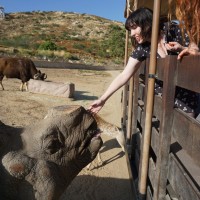 Ellie Warren
Ellie Warren
6 March 2023 10:34pm
Moveapps: EMAC23 Coding Challenge
3 March 2023 7:58am
6 March 2023 7:53am
Thanks Lars! Look forward to any entries from you and your colleagues. If you have an questions or suggestions, let me know.
6 March 2023 1:11pm
Hi Andrea! Although I am a keen user and observer of the Moveapps initiative, my R or Python coding skills are next to non- existing. I am therefore not likely to be contributing this time... Some day perhaps ;)
The WILDLABS Variety Hour: February 2023 - YouTube
3 March 2023 11:24am
Last week's Variety Hour is now up on youtube. It was a great session - we covered Moveapps, an awesome community project building marine biologgers, chatgpt and google earth engine vs microsoft's planetary computer. Thanks everyone who came along!
Moveapps EMAC23 Coding Challenge – Participate now!
3 March 2023 7:45am
US Sales Manager for Fishing Tech (full time)
27 February 2023 3:04pm
EU Sales Manager for Fishing Tech (full time)
27 February 2023 2:57pm
Block chains and NFTs in wildlife conservation
16 February 2023 11:17am
16 February 2023 12:18pm
Hey Janet!
We had a slightly intense discussion at one of our recent variety hour shows, which I belive @Netty_Cheruto already sent your way. But in case anyone else spots this thread and has the same question, it's here:
What specifically were you looking to learn more about? If it's just about NFTs and blockchain in general, the work the Unearthodox team (formerly known as the Luc Hoffmann Institute) are doing might be worth having a look at. They got in contact with me recently to share their project ‘Digital Disruption and Future of Conservation NGOs project’ and the digital toolkit that has recently been launched as part of this project.
The project is focused on exploring the potential of emerging digital technologies, including blockchain, to transform conservation practices and improve the efficiency and effectiveness of conservation NGOs. The project aims to understand how these technologies can be used to benefit the conservation sector and support the work of conservationists around the world.
The digital toolkit has been designed as a basic introduction to blockchain concepts and their potential use for nature conservation. It includes information and resources to help conservation practitioners understand the opportunities and challenges of using blockchain technology in their work.
If you have specific questions, pop them in a reply and I'll see if someone from their team can pop in here and answer them!
Steph
24 February 2023 12:24pm
Hi Janet,
I've written quite a bit about this from the perspective of conservation and conservation science finance. You can see some of the articles here www.moonjellyacademy.org and more on my LinkedIn pages.
LP
27 February 2023 9:45am
Hi all,
Thank you so much for sharing the resources, these are quite insightfull
Texas Chapter of The Wildlife Society’s Annual Meeting 2023
20 February 2023 10:56pm
The Variety Hour: 2023 Lineup
15 February 2023 11:29am
Amazon Sustainability Accelerator
15 February 2023 10:22am
Catch up with The Variety Hour: February 2023
14 February 2023 6:26pm
Suggestions for user research/co-design methodologies
9 November 2022 11:32am
31 January 2023 3:01pm
Hi,
I'm the UX researcher at Rainforest Connection (RFCx). I use research methods such as interviews, usability testing, and card sorting to understand scientists' pain points and needs while using the bioacoustic monitoring platform, Arbimon.
In terms of tools, I use Figjam for brainstorming and mapping, Notion for a research repository, Zoom for interviews, and Figma for prototyping. I'm exploring how to use ChatGPT to speed up my process too! I use it to draft recruitment emails, summarize transcripts etc. I try to use tools that are either low-cost or that RFCx already has subscriptions of.
Since I'm a UX team of one, I also partner with University student groups/practicum courses to let UX students take on some of our projects.
Feel free to reach out; I'm always happy to chat.
10 February 2023 1:06pm
Hi @Sicily_Fiennes
Apologies for the very late response to this thread, are you still looking for advice on user research and co-creation methodologies? I see there is a lot of support here on tools already ;-)
I would recommend running some sessions with low fidelity prototypes as early as possible, definitely before investing in any development! You can do this with a variety of tools, but paper prototypes can also be great if you are trying to compare very different concepts. You can use sketches to run more of a co-creation session, so that you encourage your users to define the data insights that they need explicitly and explore together different ways of visualizing & interacting with the information.
I normally do 1-1 interviews to define needs and identify potential barriers, before prototyping. But, you might be further ahead in the design process by now.
If you still need some advice on defining the key use cases or the data visualization with users, I would be happy to offer a quick chat over zoom on how to go about it.
I am an independent service designer / user researcher with 14 years of experience in the tech industry, based in Europe :-)
Hope this helps!
Yanna
14 February 2023 1:21am
Hi @Sicily_Fiennes,
Over the past several years, I have explored how to design engaging and useful tools for the exploration of audio recording to locate calls of a particular bird species (i.e. Eastern bristlebirds). I worked to understand the practices of a species recovery team, as well as their experiences trialling audio recorders and analysis. Additionally, I explored knowledge of birders and broader audiences, and how this relates to them making sense of audio recordings and broader nature media (e.g. distribution maps and photographs of birds). My methods to understand these included semistructured interviews, artifact exploration (very low fidelity prototyping), and ethnographically inspired participant-observer fieldwork. I also took some inspiration from design research approaches such as contextual inquiry, cultural/technical probes, and more. My background prior to being a design researcher was in ecology, conservation, and environmental education, so I drew from that expertise to understand a little-known bird species and the role of technology in supporting people in becoming familiar with it. Most of my work was positioned within the field of Interaction Design, publishing via Human-Computer Interaction, Designing Interactive Systems, and Computer Supported Cooperative Work outlets (i.e. rather than UX/UI). If interested in knowing more, perhaps have a look at papers I was the first author on that are listed here, and a few videos here. My research highlights the importance of understanding the situation, knowledge, experiences, and needs of different groups of people to design enticing and useful technologies that foster learning, cooperation, and integration into existing practices. In my experience, people are sometimes compelled to be more open and creative when not interacting with technologies that can be perceived as expensive and polished products.
Deep Sea BRUVS Development
28 January 2023 1:41am
11 February 2023 3:07am
Hi Titus,
If the usual syntactic foam sources aren't available, an option may be to add an empty dry housing or use a larger housing for the BRUV, just to provide the buoyancy.
You can make your own syntactic foam from glass microballoons and epoxy resin, but this will require experimentation and testing. For sub-surface buoyancy, you could also use a jerry can full of cooking oil, or a coil of polypropylene rope.
Hiring Full Stack Developer at Conservation X Labs
10 February 2023 5:35pm
Call for Proposals: 'Can Technology Save Biodiversity?'
10 February 2023 10:31am
Tech for a sustainable future: The challenges and opportunities ahead
10 February 2023 10:30am
Interesting read on how tech is contributing to climate change and what companies are doing to improve sustainability.
Call for Proposals: 'Special Feature: Innovation in Practice'
7 February 2023 11:56am
Job: Building a network of conservation tech across continents
2 February 2023 1:50pm
Key Conservation Platform Launch Party!
2 February 2023 6:17am
We need more people using Earth observation data
24 January 2023 4:51pm
3 February 2023 11:11am
3 February 2023 11:17am
3 February 2023 7:40pm
Interview for Technologies in Conservation
24 November 2022 10:07am
16 January 2023 2:42pm
I'd be happy to chat with you if you wanted! My expertise is within passive acoustic monitoring particularly. The Conservation Tech Directory might be useful for you in identifying relevant actors within the space.
16 January 2023 5:16pm
Happy to contribute [email protected]
17 January 2023 5:12pm
My original background is in ecology and conservation, and am now in the elected leadership of the Gathering for Open Science Hardware which convenes researchers developing open source tech for science. I am not working on a specific piece of technology right now, but am happy to contribute some higher-level views for your interview if that helps.
Conservation Technology Intern (Vietnam)
11 January 2023 5:00pm
PhD position (m/f/d) in Insect Ecology and Conservation
9 January 2023 12:53pm
Education Paper on Computer Vision for Ecology
9 January 2023 5:30am
Job: maker / workshop technician
5 January 2023 10:53am
Conservation Design Project Recruitment
19 December 2022 5:52pm
4 January 2023 10:48am
intrested.
FULL STACK DEVELOPER (FOREST COMMUNITIES MONITORING SYSTEM)
19 December 2022 10:40am



























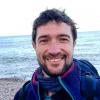
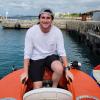









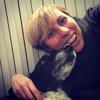




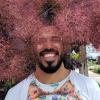

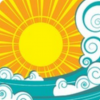


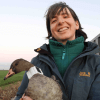

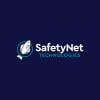
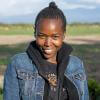

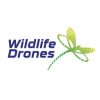






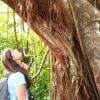




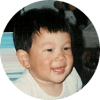
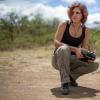


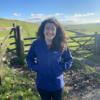
3 March 2023 3:12pm
Super initiative! I hope you get a lot of entries to this coding challenge!